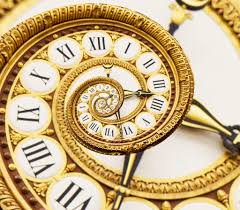
 This image just makes me think of dads. Shout out to all the dads who ever spun this this amazing creation around till they were dizzy too and all us kids’ feet were sticking straight out behind us and we screamed ourselves hoarse with laughter. You know what? The more I think about it, this other quote:
This image just makes me think of dads. Shout out to all the dads who ever spun this this amazing creation around till they were dizzy too and all us kids’ feet were sticking straight out behind us and we screamed ourselves hoarse with laughter. You know what? The more I think about it, this other quote:
was learned at the cost of skinned knees and barfing in the bushes after riding this little baby! You can’t hardly find these anymore, how are we going to pass these life lessons on to our kids and grandkids?
If you enjoy this type of humor and need to lighten up your day check out Don’t Forget to Breathe on Facebook (I haven’t looked at everything, but it touts good clean humor and I like what I’ve seen so far.) A little humor to lighten up your life this weekend.
 Remembering the Time is now on Pinterest! The Awesome Sauce has been cooking for the last couple weeks but now it’s ready. You can find the curated best that I’ve rounded up for you all in one place. These 11 boards of inspiration, helps, tips and sometimes just plain fun are sure to help you get started sharing your story as well as looking for the stories around you. They might be right there in your own family. They might be hiding in plain sight in a conversation with an old friend. I’ll add more inspiring, helpful pins and refine as time goes by (I think that’s a song title).
Remembering the Time is now on Pinterest! The Awesome Sauce has been cooking for the last couple weeks but now it’s ready. You can find the curated best that I’ve rounded up for you all in one place. These 11 boards of inspiration, helps, tips and sometimes just plain fun are sure to help you get started sharing your story as well as looking for the stories around you. They might be right there in your own family. They might be hiding in plain sight in a conversation with an old friend. I’ll add more inspiring, helpful pins and refine as time goes by (I think that’s a song title).
Here’s the Remembering the Time Pinterest boards that are up for exploration right now. Hope you enjoy!
I’ve got my farmer hat on today, irrigating my small pecan orchard in the first high temperatures of the year. We just went over 100 this week—summer is here! This hard, grubby work gives me just a taste of what my pioneer relatives must have dealt with to eke a living from the land. Wow—am I glad for ice cream, air conditioning and maybe a bit of Pinterest when the job is done for the day.
Hope you have a wonderful weekend,
 Do you have a long held dream you’d thrill to see fulfilled? I have a wonderful one to share:
Do you have a long held dream you’d thrill to see fulfilled? I have a wonderful one to share:
Here’s the back-story. Amy Motto is a retired Marriage and Family Therapist who also happens to have a Fine Arts degree. In 1990 she was diagnosed with Multiple Sclerosis but continued to work as a counselor for another 10 years. When her physical limitations affected her ability to continue in that field, she picked up her pen and a paintbrush.
At that time a silky furred little dog, Cassie, also came into her life. Amy says,
“Cassie was born behind a friend’s barn under a car top carrier where her terrier mom whelped a litter of five puppies. The barn owner’s wife was a secretary where I worked and she brought them all to work in a box when they were 6 weeks old. She said she had saved Cassie for me because she was the cutest (the only fuzzy one and the most laid back). I hadn’t told her to save me one, but when I saw her I fell in love with her! She had great big brown button eyes. I asked my boss if I could keep her in my office until I could get home at lunch. He said okay and she fell asleep on my foot! My husband loved her too. He ended up singing to her in the middle of the night because she was whining and he thought if she kept me awake we would have to give her up.”
Amy and the adorable mutt shared life together for fourteen years until Cassie passed away. “She taught me an even deeper appreciation of God’s creation,” Amy says. Cassie is the inspiration for a children’s picture book,

which Amy wrote and illustrated back in 1999. She never forgot it, but tucked it carefully away in her desk for almost two decades, sidelined by the encroaching demands and limitations of dealing with MS. In 2017 she began pursuing options for publishing the book and decided this year to self publish it with the guidance of Karen Ray of Remembering the Time personal history service.
Amy’s strong vision for her book and her desire to get it into the hands of children and their parents to enjoy brought the beautiful artwork out of the desk and into the light. Although her ability to paint is greatly reduced, she had clear ideas for the final graphic design touches on her book. She and Ray discussed the options and then Ray consulted with Jessica Connolly of Telos Designs.
Connolly has a wide range of experience in the design world and has produced an impressive array of work as well as original art. After 7 years practicing architecture in Austin, Texas, she struck out on her own, pursuing a passion for art and graphic design. In 2011 she established Telos Design, LLC. She works with corporate entities, nonprofit organizations and individuals to create unique logos, collateral material, special event invitations, and web designs. Her experience in both architecture and graphic design combine to bring a unique eye for color, proportion, and composition with a modern aesthetic.
Ray and Connolly have worked together on memoir projects for Remembering the Time’s clients and are delighted to collaborate on a children’s book. Connolly has young children at home and while Ray’s are grown, both moms have logged many hours reading to their kids. They recognized a winner of a children’s book in Puppies Need Pockets. Connolly took Amy’s ideas and “worked her magic” as Ray says, turning her story and colorful artwork into a charming, fun to read book for children ages 3 to 10.
Remembering the Time specializes in helping people realize their dreams of saving their unique memories and experiences. Ray uses her interviewing and writing skills to draw out her clients’ stories and create oral histories and beautiful books they can share with their families. Sometimes, as in Motto’s case, this involves helping to guide a client through the fulfillment of their dream project.
Author Amy Motto is married and the mother of three grown sons, two of whom she fostered from infancy. She currently has two rescue dogs and a Sun Conure Parrot. Amy and her husband make their home in Las Cruces, New Mexico. Puppies Need Pockets will be available summer 2018 for on Amazon.com and for private purchase. Contact karen@rememberingthetime.net to reserve a copy.
Can Do MS specializes in transforming lives, delivering health and wellness education programs to help families living with MS thrive.
Planning a family reunion this year? Life In Tandem Photography and Remembering the Time Personal History have teamed up to make your event an amazing time to remember with your family. We’ll combine the best of photography with oral history and story telling. While you enjoy food, fun and family we’ll interview your relatives sharing their one of a kind memories and capture those priceless photographic moments. Keepsake albums, books and other mementos of your reunion will then be available to save and enjoy your family’s history.
For some great ideas for family activities check out https://howdoesshe.com/5-bonding-ideas-next-family-reunion/
Want even more ideas? Here’s a massive list from Gathered Again:
Of course, no reunion is complete without delicious food.
How about gathering those well-loved recipes and creating a “Taste of the Smith/Lucero Family” cookbook that you can send out to everyone later? What a fun gift, especially for the younger families starting out.
Summer will be here before you know it–let us help you hit a home run with your family reunion!
 Time. Your mom not only gave you life, she gave you the priceless gift of time, even if she only carried you close to her heart for nine months. May you feel the weight of that and gratitude for the next breath you take. When she was happy, tired, sad, joyful, wrung out, laughing with you, crying with you and just doing life with you, you occupied her thoughts. You are imprinted on every waking minute of her life.
Time. Your mom not only gave you life, she gave you the priceless gift of time, even if she only carried you close to her heart for nine months. May you feel the weight of that and gratitude for the next breath you take. When she was happy, tired, sad, joyful, wrung out, laughing with you, crying with you and just doing life with you, you occupied her thoughts. You are imprinted on every waking minute of her life.
If Mother’s Day is a time of grief for you, we understand that too. May you find peace and joy in blessing others this weekend; it will comfort and soothe your own heart too.
 Mom, Madre, Mommy, Ma’am, Lisa—Whatever you call your mom or the lady in your life you love like a mother, you know that the second Sunday in May is a day to honor her. I double dog dare you to do this in a new way. Here are two unique and amazing gift ideas for you to thrill your mom this Mother’s Day:
Mom, Madre, Mommy, Ma’am, Lisa—Whatever you call your mom or the lady in your life you love like a mother, you know that the second Sunday in May is a day to honor her. I double dog dare you to do this in a new way. Here are two unique and amazing gift ideas for you to thrill your mom this Mother’s Day:
Want something Mom can unwrap?
Memoir in a Basket
A beautiful gift basket filled with a fill-in–the-blank life story journal, an elegant pen, a list of memory prompts and questions, a consult with me (in person if she’s in Las Cruces or El Paso, by phone if she’s not) assorted coffee and tea and of course chocolate.
Gift certificates are available as well in any denomination for you to help make your mom’s story a reality. Pitch in with your siblings and give Mom the inspiration to share her story.
Memoir in a Basket–$60
Free delivery in Las Cruces
$10 shipping if mailing
Order via email at karen@rememberingthetime.net or by phone at 575-323-1048
Want to give Mom some one-on-one time?
The Gift of Time
Most moms I’ve visited with want time with their kids, a hug, to know they are loved and cherished. So here’s a top notch idea. Give her the gift of time spent listening to her story, interview her about some of her memories. Write them up in a beautiful little book, put in a few photos of her through the years, including some when she’s a gorgeous teenager and some when she’s a gorgeous retiree.
Put in some photos of life before you, even though you secretly know you are the center of her world. Get to know her better, what were her dreams and hopes, what are they now? Tuck away some of those ideas for future dates with your mom. Pick at least one or two a year and make them happen.
(Fellow mom and daughter)